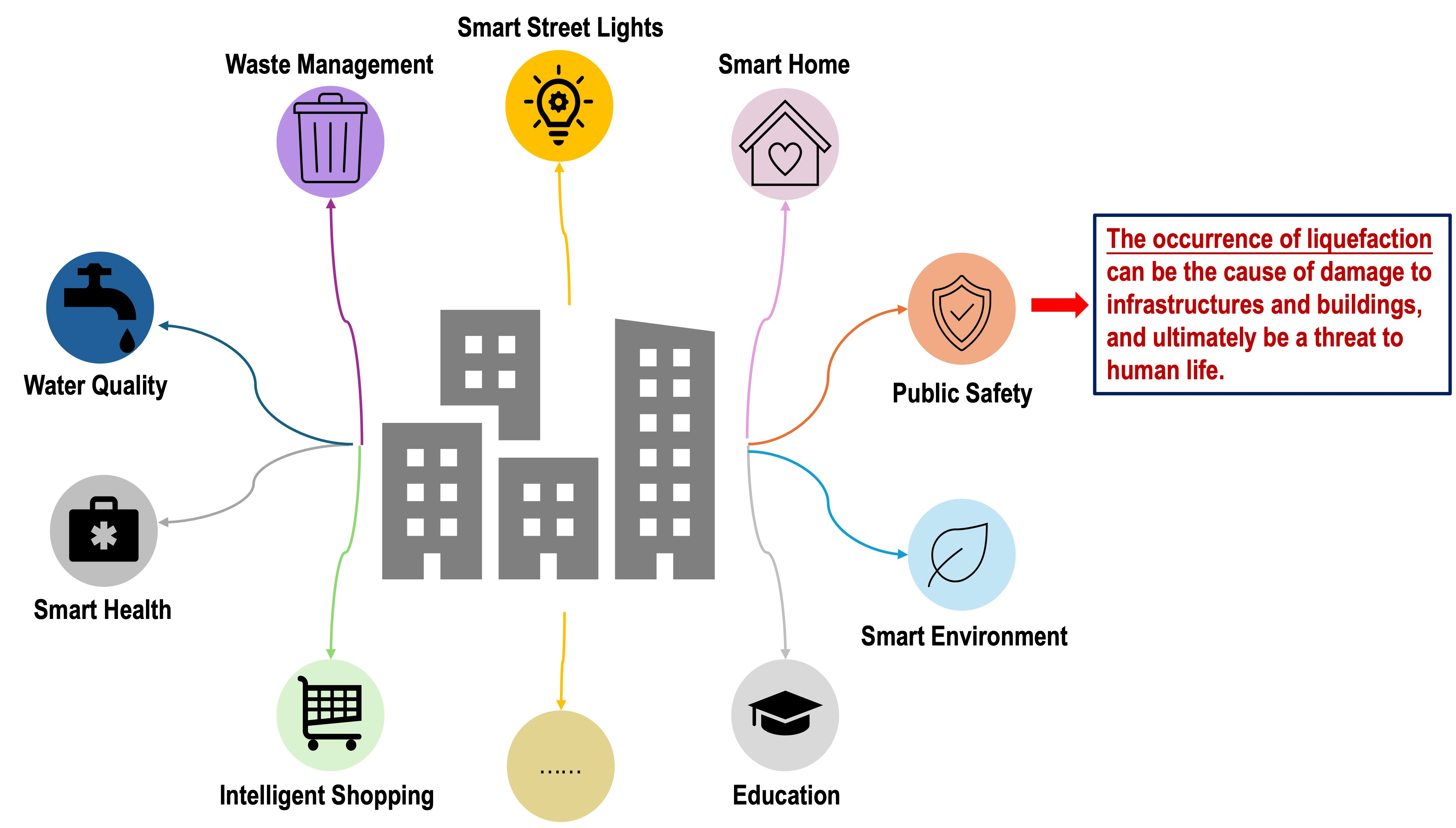It provides contour maps that show the depth of soil bearing layers, helping city planners identify areas vulnerable to liquefaction
October 28, 2024
In earthquake-prone areas like Japan, there is a need for better prediction of soil stability to mitigate liquefaction risks. Towards this end, researchers have used machine learning models, including artificial neural networks and bagging techniques, to create accurate 3D maps of bearing layers using data from 433 locations in Setagaya, Tokyo. This approach can identify stable construction sites, enhance disaster planning, and contribute to safer urban development, making cities more resilient to liquefaction risks.

Title: AI-driven method for liquefaction risk assessment enhances smart city planning and resilience, contributing to public safety
Caption: The AI-based model proposed by researchers from Japan provides detailed soil stability maps, allowing smart cities to identify safe construction zones and mitigate liquefaction risks. The proposed model can lead to safer cities in earthquake-prone regions.
Credit: Shinya Inazumi from SIT, Japan https://www.mdpi.com/2624-6511/7/5/113#
Tokyo, Japan, (Highpoint Digest News) − As urban areas expand, the threat of natural disasters becomes a pressing concern for city planners and disaster management authorities. In earthquake-prone countries like Japan, one of the critical risks to infrastructure is liquefaction, a phenomenon where intense shaking causes loose, water-saturated soils to lose their strength and behave like a liquid. Liquefaction can cause buildings to sink into the soil, crack foundations, and collapse roads and utilities like water lines.
Soil liquefaction accompanies every major earthquake, and the damage is significant. The 2011 Tōhoku earthquake in Japan caused liquefaction that damaged 1,000 homes. In Christchurch, the 6.2 magnitude earthquake resulted in liquefaction that destroyed 80% of the water and sewage systems. In 2024, the Noto earthquake caused widespread liquefaction, affecting 6,700 houses.
To make cities more resilient to the effects of liquefaction, Professor Shinya Inazumi and his student Yuxin Cong from Shibaura Institute of Technology in Japan have been developing machine learning models that predict how soil will react during earthquakes. These models use geological data to create detailed 3D maps of the soil layers, identifying stable areas and those more prone to liquefaction. Unlike manual soil testing methods, which cannot cover every location, this approach offers a broader and more detailed view of soil behavior.
In their recent study published in Smart Cities on 8 October 2024, they used artificial neural networks (ANNs) and ensemble learning techniques to accurately estimate the depth of the bearing layers, a crucial indicator of how stable the soil is and how likely it is to experience liquefaction during an earthquake.
“This study establishes a high-precision prediction method for unknown points and areas, demonstrating the significant potential of machine learning in geotechnical engineering. These improved prediction models facilitate safer and more efficient infrastructure planning, which is critical for earthquake-prone regions, ultimately contributing to the development of safer and smarter cities,” says Prof. Inazumi.
Predicting areas with deep and stable bearing layers helps identify locations where the soil can provide better support for buildings, especially during events like liquefaction. The researchers collected bearing depth data from 433 points in Setagaya-ku, Tokyo, using standard penetration tests and mini-ram sounding tests. In addition to the depth of the bearing layer, they also recorded key information about each location, such as longitude, latitude, and elevation.
The data was used to train an ANN to predict the bearing layer depth at 10 locations, utilizing the actual site measurements to evaluate the accuracy of the predictions. To improve the accuracy of these predictions, the researchers applied a technique called bagging (bootstrap aggregation), which involves training the model multiple times on different subsets of the training data. This approach resulted in a 20% improvement in prediction accuracy.
Using the predicted values, the researchers created a contour map illustrating the depth of bearing layers within a 1 km radius around four selected locations in Setagaya Ward. This map is a valuable visual aid for civil engineers, helping them identify suitable construction sites with stable soil conditions. It also assists disaster management experts in pinpointing areas that are more vulnerable to soil liquefaction, enabling better risk assessment and mitigation strategies.
The researchers envision their method as a key enabler for smart city growth, emphasizing the importance of data-driven strategies in guiding urban development and infrastructure planning. ”This study provides a foundation for safer, more efficient, and cost-effective urban development. By integrating advanced AI models into geotechnical analysis, smart cities can better mitigate liquefaction risks and strengthen overall urban resilience,” says Prof. Inazumi, while discussing the future implications of this study optimistically.
Going ahead, the researchers plan to enhance their model’s accuracy by incorporating additional ground conditions and developing specialized models for coastal and non-coastal areas, considering the influence of groundwater, a significant factor in liquefaction.
This research received no external funding.
Source: Shibaura Institute of Technology



